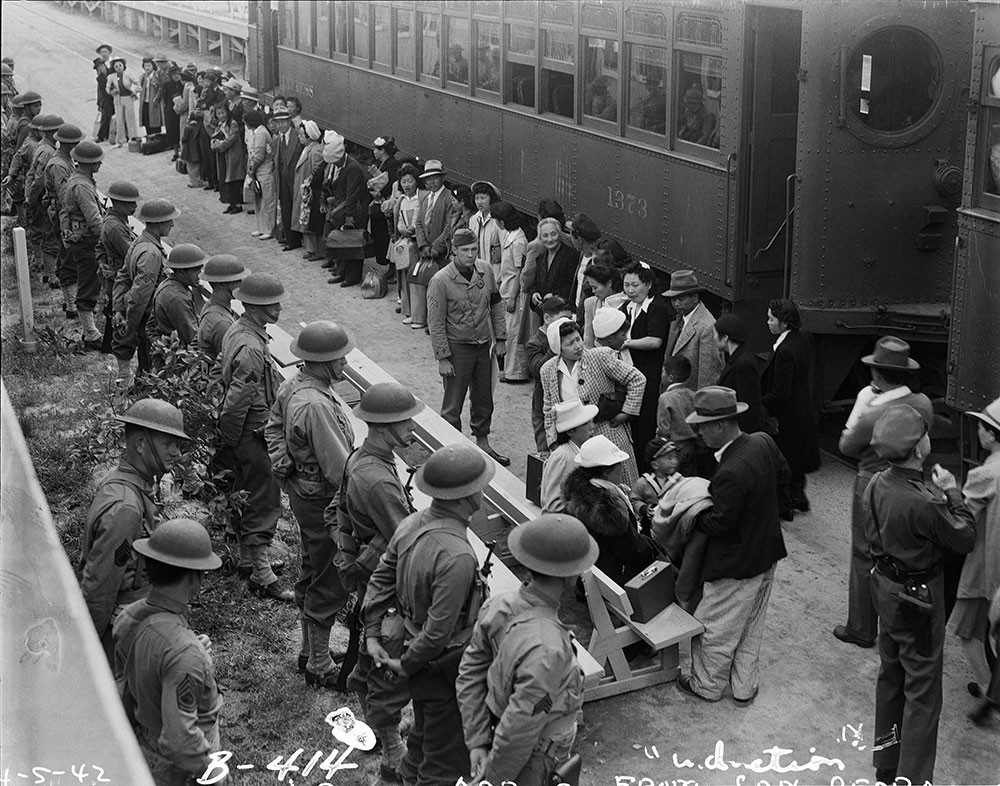
Facing pressure from both the American people and military leaders, President Franklin D. Roosevelt uprooted and imprisoned 120,000 Japanese Americans with one stroke of his pen on February 19, 1942.
Largely seen as one of the darkest moments in our nation's history, the victims of Executive Order 9066 are commemorated in the new special exhibit at the Franklin D. Roosevelt Presidential Library and Museum in Hyde Park: "Images of Internment: The Incarceration of Japanese Americans during World War II."
Following a 2016 exhibit about Pearl Harbor, "Images of Internment" is part of a larger series to mark major moments in America's involvement leading up to and through World War II scheduled through 2020.
The exhibition features work from photographers like Dorothea Lange, Clem Albers, Ansel Adams, and Hikaru Iwasaki. Most of the images come from the War Relocation Authority (WRA) photo collection—the wartime agency that operated the remote government camps where Japanese Americans were imprisoned. The WRA hired photographers—like Lange, Albers, and Iwasaki—to document life in the camps.
Before deciding on the final works of art for the exhibit, Museum Curator Herman Eberhardt sifted through nearly 15,000 photographs. Chosen for their historical importance as well as their aesthetic beauty, Eberhardt wanted to display work from both "legendary" and relatively unknown artists—like Albers and Iwasaki. Iwasaki was the only Japanese American working as a full-time WRA photographer. "[Albers] shot some of the iconic images we now associate with the story of relocation and incarceration of Japanese Americans during the war," he says. "[And Iwasaki's] photos documenting the closing of the camps are especially powerful."
The exhibit shines a light on a moment in history that has long been swept into the shadows. Paul Sparrow, director of the Franklin D. Roosevelt Presidential Library and Museum, says the Japanese internment is something on the "edge of people's awareness"—they know it happened but they are fuzzy on the details. "This exhibit really brings you inside the camps and provides a powerful visual lesson on the brutal reality of forced relocation," Sparrow says.
Both Sparrow and Eberhardt hope that the exhibit will help the public gain a greater understanding of what the Japanese Americans went through. "We hope that people will put themselves in the place of innocent American citizens who were forced to leave their homes, their businesses, [and] their communities behind even though they did nothing wrong," Sparrow says. "They were loyal Americans who were subjected to this relocation because of their race."
While not meant to directly invoke the current political climate surrounding immigration, Sparrow says it is "critically important" to examine both the successes and the failures of our leaders—including the president.
"President Roosevelt led America through two of its worst crises, and his extraordinary leadership helped create the modern world we enjoy today," he says. "Executive Order 9066 reminds us that even our greatest leaders can make mistakes when the voice of the people drowns out the voice of reason."
Though the exhibit is primarily photographs, "Images of Internment" also provides historical context through documents, oral histories of interned Japanese Americans, and a video of President Ronald Reagan giving a public apology and providing reparations to the surviving victims on behalf of the nation.
"Images of Internment: The Incarceration of Japanese Americans during World War II" will be on display in the Franklin D. Roosevelt Presidential Library and Museum's William J. vanden Heuvel Gallery through December 31. Regular hours and admission apply. (800) 337-8474; Fdrlibrary.org.
—Carolyn Quimby











